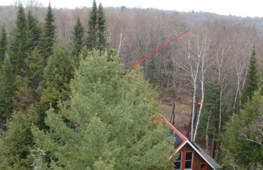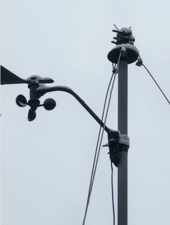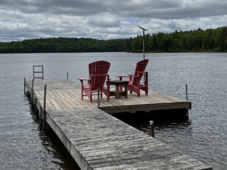offgrid-curious
New Member
I've recently installed Starlink at my off-grid cottage, however the number of trees cause a large number of obstructions for the dish. I've seen some videos on Youtube of people mounting their dishes in trees and I think this is my best option. I've reached out to a local arborist who will take on the job. Because I'm in the process of completing my solar install, I've been thinking how I can mitigate any surge/grounding issues that this set up could cause.
I'm using a POE injector (https://www.amazon.com/dp/B0CQC4321X) to power the dish instead of the Starlink router, which includes 8KV of lightning protection. The POE injector has a ground connection which I've connected to my ground bus bar in my indoor panel. The dish is connected with a shielded CAT5e cable. I believe the injector will handle ESD protection just fine.
What I'm more concerned about is lightning/surge protection. The candidate tree I'm looking at is about 50ft high and the tree is about 80 feet or so from the cottage. My plan is to mount the dish on the end of a pole above the top of the tree. I'm worried that this essentially turns the tree into a lightning rod. I don't know if I could mitigate this by perhaps using PVC pipe instead of metal -- schedule 40 PVC pipe is weather resistant so I think would hold up.

Would it be a good idea to put something like a Midnite SPD-115 on the DC supply that is going to the POE injector? I see this as a good protection for any surge from making its way back into my system if there was a lightning strike closer to the dish. I'm also wondering if it would make sense to connect the POE injector directly to the outdoor ground bus bar, to avoid as many indoor components as possible.
Is this idea crazy? Am I just asking for trouble?
I'm using a POE injector (https://www.amazon.com/dp/B0CQC4321X) to power the dish instead of the Starlink router, which includes 8KV of lightning protection. The POE injector has a ground connection which I've connected to my ground bus bar in my indoor panel. The dish is connected with a shielded CAT5e cable. I believe the injector will handle ESD protection just fine.
What I'm more concerned about is lightning/surge protection. The candidate tree I'm looking at is about 50ft high and the tree is about 80 feet or so from the cottage. My plan is to mount the dish on the end of a pole above the top of the tree. I'm worried that this essentially turns the tree into a lightning rod. I don't know if I could mitigate this by perhaps using PVC pipe instead of metal -- schedule 40 PVC pipe is weather resistant so I think would hold up.

Would it be a good idea to put something like a Midnite SPD-115 on the DC supply that is going to the POE injector? I see this as a good protection for any surge from making its way back into my system if there was a lightning strike closer to the dish. I'm also wondering if it would make sense to connect the POE injector directly to the outdoor ground bus bar, to avoid as many indoor components as possible.
Is this idea crazy? Am I just asking for trouble?




